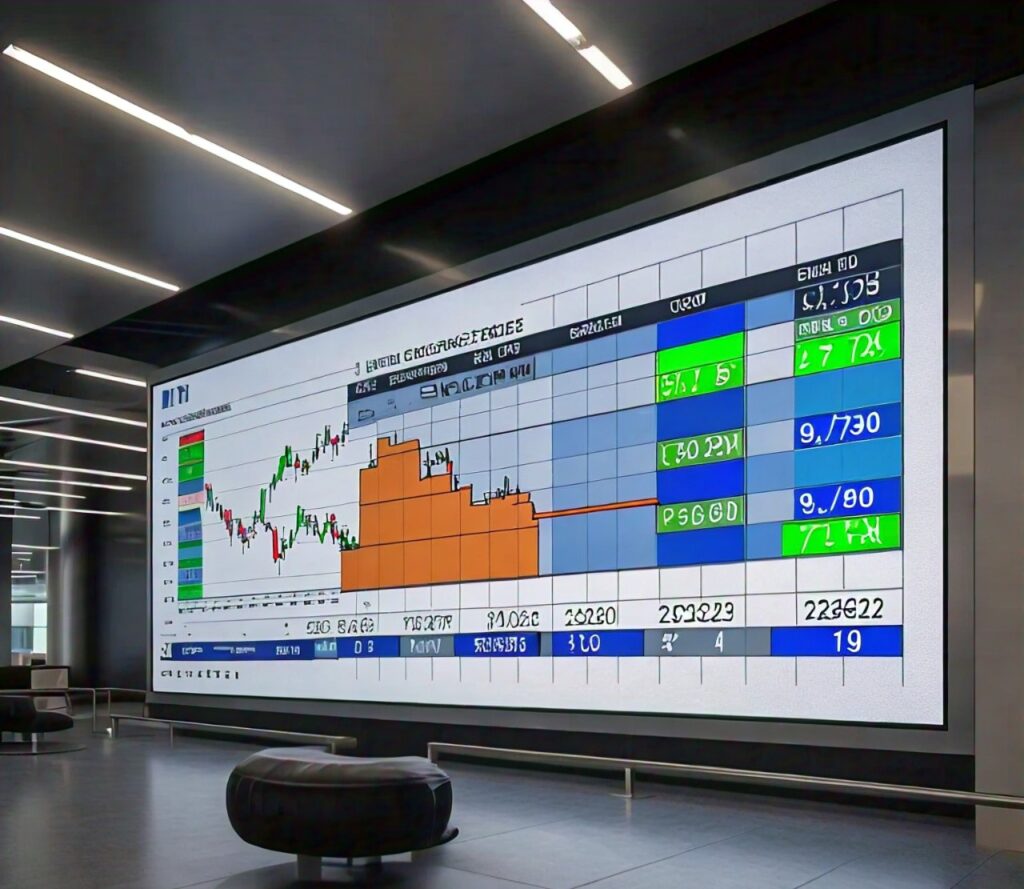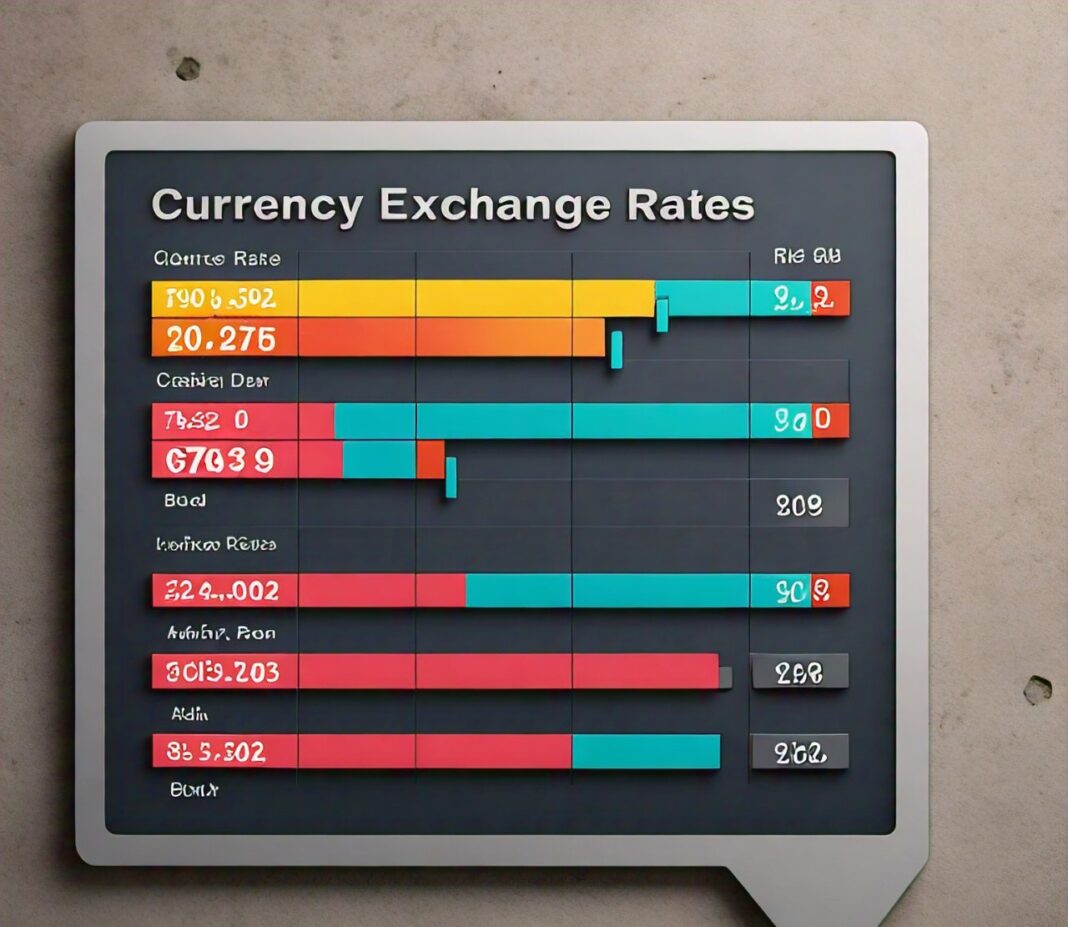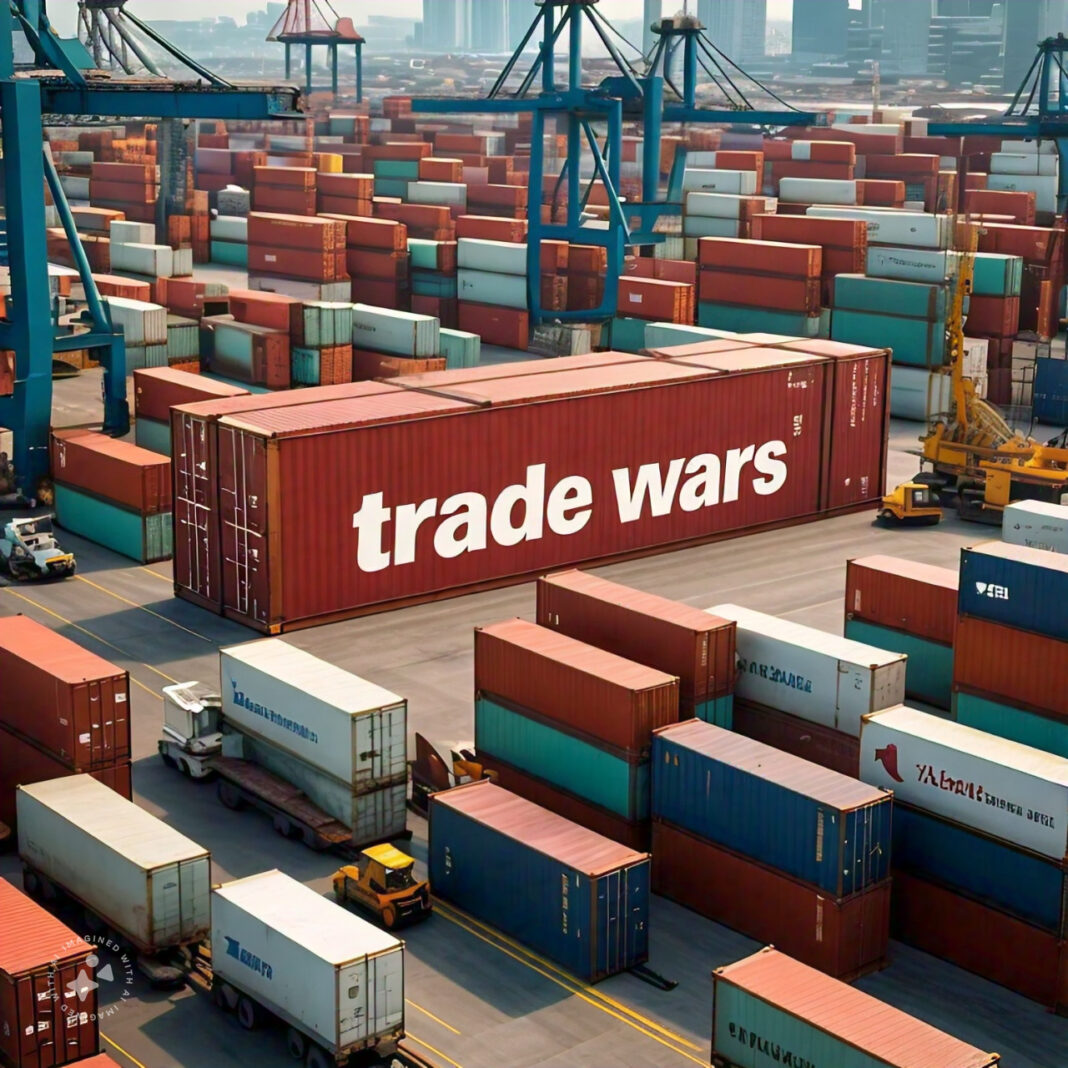Currency exchange rates represent the value of one currency in terms of another and are crucial for facilitating international trade and investment. They determine how much of one currency is needed to purchase a unit of another currency and play a pivotal role in the global economy.
Exchange rates fluctuate due to various factors, including economic policies, market conditions, and geopolitical events, influencing the competitiveness of a country’s goods and services on the global stage.
This article aims to evaluate the impact of Currency Exchange Rates fluctuations on the competitiveness of exports and imports. By examining how changes in exchange rates affect trade dynamics, we seek to provide valuable insights for economists and researchers. Understanding these effects is essential for developing effective trade strategies, economic policies, and financial models.
Understanding Exchange Rate Mechanisms
Types of Exchange Rate Systems
Exchange rate systems determine how currencies are valued relative to each other and can significantly impact international trade. There are primarily two types of exchange rate systems:
- Floating Exchange Rates: Under a floating exchange rate system, currency values are determined by market forces, such as supply and demand, without direct government or central bank intervention. This system allows for fluctuations based on economic conditions, market speculation, and geopolitical events. Countries with floating exchange rates, like the United States and the Eurozone, experience natural adjustments in their currency values that reflect changes in their economic fundamentals.
- Fixed Exchange Rates: In a fixed exchange rate system, a country’s currency value is pegged to another major currency or a basket of currencies. The government or central bank intervenes in the foreign exchange market to maintain the currency’s value within a narrow range. Countries with fixed exchange rates, such as Hong Kong, use this system to provide stability and predictability in trade and investment. However, maintaining a fixed exchange rate can require significant reserves and intervention, especially during periods of economic instability.
Factors Influencing Exchange Rates
Several factors influence exchange rates, affecting how currencies are valued and their impact on international trade:
- Interest Rates: Central banks’ interest rate decisions play a critical role in exchange rate movements. Higher interest rates attract foreign capital, leading to an appreciation of the currency, while lower rates can lead to depreciation.
- Inflation Rates: Countries with lower inflation rates typically see an appreciation in their currency value, as their purchasing power increases relative to other currencies. Conversely, higher inflation can lead to currency depreciation.
- Economic Indicators: Economic indicators such as GDP growth, employment rates, and trade balances provide insights into a country’s economic health and can influence exchange rate fluctuations. Strong economic performance generally supports currency appreciation.
- Political Stability and Economic Performance: Political stability and sound economic management enhance investor confidence, leading to currency appreciation. Uncertainty or instability can lead to depreciation as investors seek safer assets.
Exchange Rate Determination Models
Several theoretical models explain how exchange rates are determined and their implications for international trade:
- Purchasing Power Parity (PPP): PPP theory suggests that exchange rates adjust to equalize the purchasing power of different currencies. According to this model, the price of a basket of goods should be the same across different countries when expressed in a common currency. Deviations from PPP can signal misalignments and potential adjustments in exchange rates.
- Interest Rate Parity (IRP): IRP theory posits that the difference in interest rates between two countries is equal to the expected change in exchange rates. If one country has higher interest rates, its currency should depreciate relative to a country with lower interest rates to offset the higher returns on investments.
- Balance of Payments Model: This model emphasizes the role of a country’s balance of payments in determining exchange rates. A surplus in the balance of payments, which indicates more capital inflows than outflows, tends to lead to currency appreciation, while a deficit can result in depreciation.
Exchange Rate Fluctuations and Their Causes
Short-Term vs. Long-Term Fluctuations
Exchange rate fluctuations can be categorized into short-term and long-term movements, each with distinct causes and effects on international trade.
- Short-Term Fluctuations: These are often driven by immediate market reactions to news, economic data releases, or geopolitical events. Short-term volatility can result from speculative trading, shifts in investor sentiment, or sudden changes in market conditions. For instance, unexpected announcements by central banks or political instability can cause rapid currency movements, impacting trade flows and economic forecasts in the short run.
- Long-Term Fluctuations: Long-term exchange rate trends are influenced by underlying economic fundamentals, such as changes in a country’s economic growth, inflation rates, and interest rates. These fluctuations reflect more sustained shifts in economic conditions and are generally slower to manifest. For example, persistent economic reforms, changes in trade policies, or significant economic growth can lead to long-term appreciation or depreciation of a currency, affecting the competitiveness of exports and imports over extended periods.
Also Read: The Impact of Trade Deficits on National Economies

Key Drivers of Exchange Rate Volatility
Several key factors drive exchange rate volatility, impacting how currencies fluctuate and influencing international trade dynamics:
- Economic Data Releases: Economic indicators such as GDP growth, employment figures, and trade balances can influence currency values. Strong economic performance typically leads to currency appreciation, while weaker data can cause depreciation. Regular reports and forecasts from institutions like the IMF or World Bank also play a role in shaping market expectations and currency movements.
- Geopolitical Events: Political instability, conflicts, and geopolitical tensions can lead to significant exchange rate movements. For example, elections, trade disputes, and international conflicts can create uncertainty and affect investor confidence, leading to rapid shifts in currency values.
- Market Speculation: Currency traders and investors often speculate on future exchange rate movements based on anticipated economic conditions or political events. Speculative trading can amplify short-term fluctuations, influencing currency values and creating additional volatility in the foreign exchange market.
- Central Bank Policies: Central banks’ monetary policies, including interest rate changes and intervention strategies, directly affect exchange rates. Central bank actions to stabilize or influence their currency can lead to short-term adjustments and impact trade competitiveness.
Impact on Export Competitiveness
Exchange Rate Appreciation
1. Effects on Export Prices and Foreign Demand
When a currency appreciates, its value increases relative to other currencies. This appreciation means that exports become more expensive for foreign buyers. As a result:
- Export Prices: The cost of goods and services priced in the appreciating currency rises in foreign markets. For example, if the euro strengthens against the US dollar, European goods become more expensive for American consumers.
- Foreign Demand: Higher prices can lead to a reduction in demand for exports, as foreign buyers may seek cheaper alternatives from other countries with weaker currencies. This can negatively impact the competitiveness of domestic exporters.
2. Case Studies of Industries Affected by Appreciation
- Automobile Industry: Car manufacturers in countries with strong currencies may find their vehicles priced out of reach for foreign buyers. For instance, a strong Swiss franc could make Swiss-made cars less competitive in international markets.
- Technology Sector: Tech companies that export software or hardware may face similar challenges, with higher prices potentially reducing their market share abroad.
Exchange Rate Depreciation
1. Effects on Export Prices and Competitive Advantage
Conversely, when a currency depreciates, it becomes cheaper relative to other currencies. This depreciation has several effects:
- Export Prices: Goods and services become less expensive for foreign buyers. A weaker yen, for instance, makes Japanese products cheaper for international consumers.
- Competitive Advantage: Lower prices can boost demand for exports, improving the competitiveness of domestic products in global markets. This can enhance market share and stimulate economic growth.
2. Examples of Sectors Benefiting from Depreciation
- Agricultural Exports: Countries with depreciated currencies can see increased exports of agricultural products. For example, a weaker Brazilian real can make Brazilian soybeans more attractive to international buyers.
- Manufacturing: Export-driven manufacturing sectors often benefit from currency depreciation, as it allows them to offer competitive pricing and capture greater market share.
Impact on Import Competitiveness
Exchange Rate Appreciation
1. Effects on Import Costs and Domestic Consumption
When a currency appreciates, it increases in value relative to other currencies, resulting in several key effects on imports:
- Import Costs: The cost of purchasing foreign goods and services decreases. For instance, if the British pound strengthens against the US dollar, British importers will find American products cheaper.
- Domestic Consumption: Lower import costs can lead to increased imports as consumers and businesses take advantage of cheaper foreign goods. This can potentially lead to a rise in consumption of imported products and services.
2. Examples of Sectors Facing Higher Import Costs
- Energy Sector: Countries that rely heavily on imported energy might benefit from currency appreciation as it reduces the cost of importing oil and gas. For example, if the Canadian dollar appreciates, Canada may see lower costs for importing crude oil.
- Consumer Goods: Importers of consumer goods, such as electronics or fashion items, may see reduced costs when their currency appreciates, allowing them to offer more competitive pricing or improve profit margins.
Exchange Rate Depreciation
1. Effects on Import Costs and Trade Balance
In contrast, when a currency depreciates, it becomes less valuable relative to other currencies, leading to:
- Increased Import Costs: The price of importing goods and services rises. For example, a weaker Indian rupee makes imported electronics more expensive for Indian consumers.
- Trade Balance Impact: Higher import costs can reduce domestic consumption of foreign goods and services. This can lead to a narrowing of the trade deficit if the higher costs lead to decreased import volumes.
Further Read: Why Emerging Markets Are the Next Frontier in International Trade

Trade Policy Adjustments
1. Recommendations for Policymakers
Policymakers can use insights into the impact of exchange rate fluctuations to formulate strategies that stabilize trade and mitigate adverse effects:
- Monetary Policy Adjustments: Central banks can adjust interest rates and engage in currency interventions to influence exchange rates and stabilize economic conditions. For instance, raising interest rates may help counteract currency depreciation and stabilize import costs.
- Trade Agreements: Negotiating trade agreements that include provisions for currency stability or exchange rate adjustments can help manage the impact of fluctuations on trade balances.
- Economic Diversification: Encouraging diversification of the economy can reduce reliance on volatile currency-dependent sectors and enhance resilience to exchange rate fluctuations.
2. Support Measures for Affected Industries
- Subsidies and Grants: Governments can provide financial support to industries adversely affected by currency fluctuations, helping them maintain competitiveness and manage higher import costs.
- Export Credit Insurance: Offering export credit insurance can protect exporters from the risks associated with currency fluctuations and encourage international trade.
Corporate Strategy Adjustments
1. Strategic Considerations for Businesses
Businesses can adopt various strategies to manage the impact of exchange rate fluctuations and maintain competitiveness:
- Hedging Strategies: Using financial instruments such as forward contracts, options, and swaps can help companies manage currency risk and lock in favorable exchange rates.
- Pricing Strategies: Adjusting pricing strategies to account for currency fluctuations can help maintain profit margins and competitiveness. This may involve revising pricing models or implementing flexible pricing structures.
- Supply Chain Optimization: Companies can optimize their supply chains by sourcing materials from countries with stable or favorable currencies to reduce the impact of currency fluctuations on costs.
2. Risk Management Practices
- Diversification: Diversifying export markets and supply sources can mitigate the impact of currency fluctuations on any single market or supply chain. Companies can explore new markets or develop alternative supply sources to reduce dependency on volatile currencies.
- Financial Planning: Implementing robust financial planning and analysis can help businesses anticipate and manage the effects of currency fluctuations on their financial performance.
Also Read: How Trade Sanctions Are Affecting Global Markets

Future Research Directions
1. Emerging Trends and Technologies
Future research can explore emerging trends and technologies that impact exchange rates and trade:
- Digital Currencies: The rise of digital currencies and blockchain technology may influence exchange rate dynamics and international trade practices. Researching these innovations can provide insights into their potential effects on currency markets.
- Global Trade Policies: Analyzing the impact of evolving global trade policies, such as trade wars and protectionist measures, can offer insights into how exchange rate fluctuations interact with broader trade dynamics.
2. Enhancing Economic Models
- Refining Models: Improving economic models to better capture the complexities of exchange rate fluctuations and their impact on trade can enhance the accuracy of forecasts and policy recommendations.
- Integrating Data: Incorporating real-time data and advanced analytics into economic models can provide more timely and accurate insights into exchange rate effects on trade.
Also Read: Trade Wars: The Future and What Lies Ahead
Conclusion
This article has explored the significant impact of exchange rate fluctuations on international trade, focusing on both export and import competitiveness. Key findings include:
- Exchange Rate Appreciation: An appreciating currency typically makes exports more expensive and less competitive abroad, potentially reducing export volumes. Conversely, it lowers the cost of imports, which can boost domestic consumption but also affect trade balances.
- Exchange Rate Depreciation: A depreciating currency generally enhances the competitiveness of exports by making them cheaper for foreign buyers, potentially increasing export volumes. However, it raises the cost of imports, which can lead to higher domestic prices and affect consumer purchasing power.
- Sector-Specific Impacts: Different industries respond uniquely to exchange rate changes. For example, export-driven sectors like agriculture may benefit from depreciation, while import-dependent industries like manufacturing might face higher costs.
In conclusion, understanding the multifaceted effects of exchange rate fluctuations on international trade is crucial for making informed economic decisions and developing effective strategies. By addressing these issues through thoughtful policy and strategic planning, both policymakers and businesses can better manage the challenges and opportunities presented by currency volatility.






